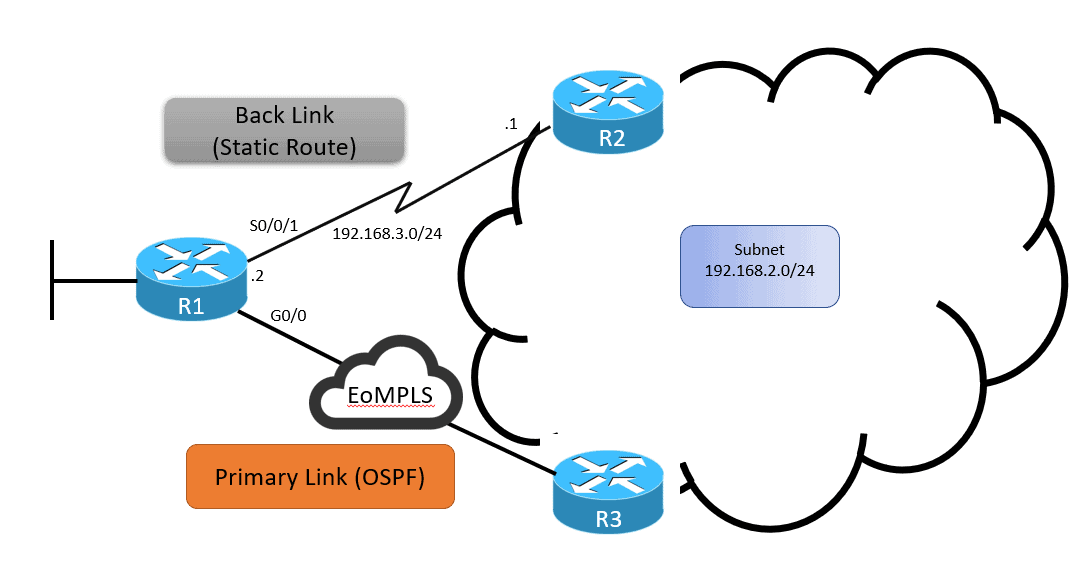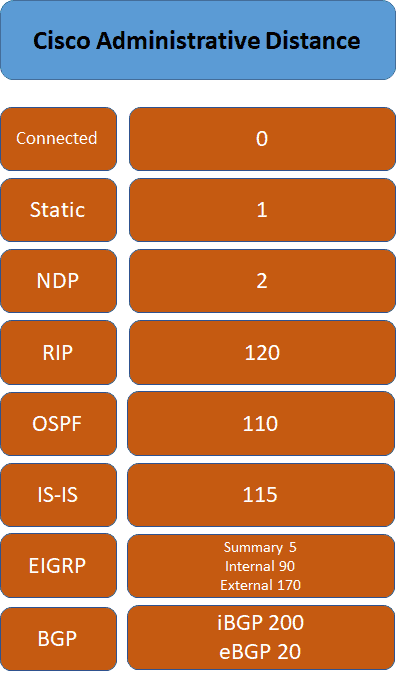Floating static routes are used in scenarios wherein the static route is configured with a higher Administrative Distance than the preferred route so that the best path is chosen for the packet to traverse towards its destination.
Since the Administrative Distance (AD) of a static route in Cisco is set to 1 as it is the most trustful connection after a directly connected route that has an administrative distance of 0, we need to set it manually to a higher value so as the better route based on other factors are preferred.
It can be considered that floating static routes are static routes that have their Administrative Distance value manipulated. Floating routes can be utilized with one more static route, or they can be used together with dynamic routing protocols. In both cases, floating static routes act as a backup route.
Understanding Floating Static Route
Let us use the diagram below as an example to understand further how a floating static route works and also see how it is configured in the network elements.
As you can see above, the scenario is that R1 is connected with two WAN links:
- One via a Gigabit Ethernet link using OSPF
- One via a T1 line with static routing
Looking at the design, we should use the Gigabit Ethernet via OSPF, which is a dynamic routing protocol as our Primary link, and the T1 static route as our backup link just in case we have an issue with our primary.
By default, IOS will calculate and choose the route with the lowest AD, therefore selecting the slower T1 static route as the preferred route based on its Administrative Distance value of 1. OSPF has an AD of 110. We should manually configure the AD of the static route to make it higher and less preferred than the AD of the learned OSPF dynamic route, which is 110.
How to Configure a Floating Static Route
To be able to do that, we are going to implement a floating static route by using the parameter on the ‘ip route’ command that sets the AD for that route alone, making the static route administrative distance greater than our dynamic routes.
In our example, as long as the primary link stays up and OSPF on R1 learns a route for the 192.168.2.0/24 network, with a default AD of 110. R1 ignores the static route.
R1# ip route 192.168.2.0 255.255.255.0 192.168.3.1 130
Now, we verify by using the ‘show ip route’ command to check if the Administrative Distance (AD) of the static route has been changed with the value we set higher than the AD of OSPF.
R1# show ip route static
! Legend omitted for brevity
192.168.0.0/16 is variably subnetted, 6 subnets, 2 masks
S 192.168.2.0/24 is directly connected, Serial0/0/1
R1# show ip route 192.168.2.0
Routing entry for 192.168.2.0/24
Known via "static", distance 130, metric 0 (connected)
Routing Descriptor Blocks:
* directly connected, via Serial0/0/1
Route metric is 0, traffic share count is 1
In our routing table, as you can see on the output of the ‘show ip route’ command, the AD of the static route to the 192.168.2.0/24 network has been changed to 130. It is now higher than the AD of OSPF, which has a default value of 110, making the Gigabit Ethernet WAN connection the primary and preferred route to forward the packets.
Below are default Administrative Distance values used in Cisco:
Download our Free CCNA Study Guide PDF for complete notes on all the CCNA 200-301 exam topics in one book.
We recommend the Cisco CCNA Gold Bootcamp as your main CCNA training course. It’s the highest rated Cisco course online with an average rating of 4.8 from over 30,000 public reviews and is the gold standard in CCNA training:


